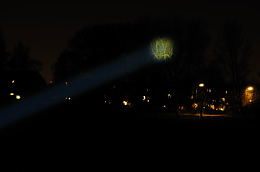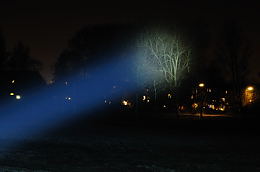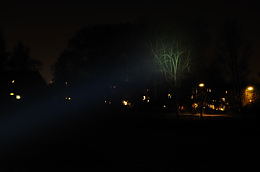Titanium Innovations L70
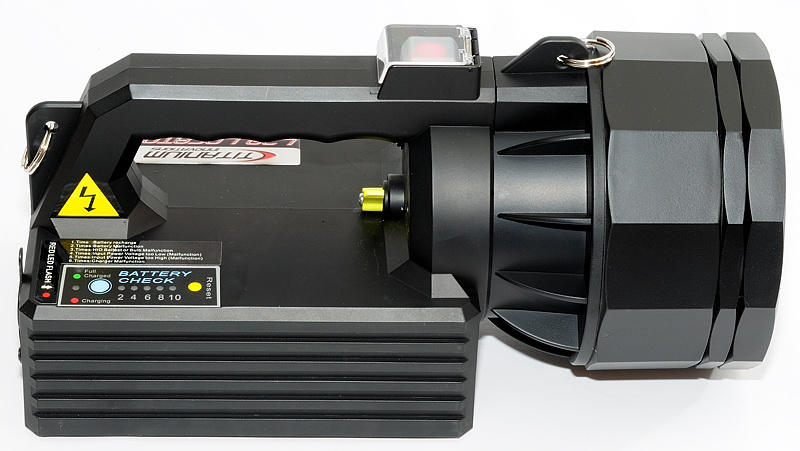
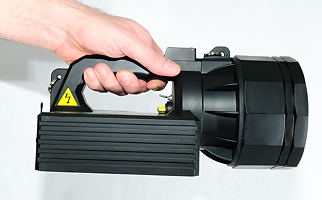
BatteryJunction are selling their own brand of lights called Titanium Innovations, this high power HID is one of the latest lights members of this brand. It is a high power HID light with two output levels: Super bright and even brighter. The light has a build in battery pack with 1 to 2 hour runtime, battery meter, lockout switch, adjustable focus and a few other nice features.
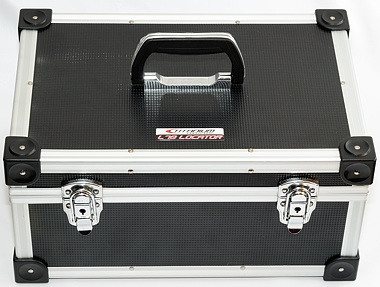
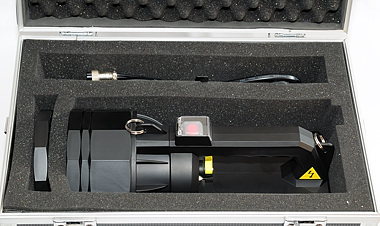
The light arrives in a good quality case with padded interior where the light and a few a few accessories are stored.
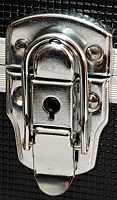
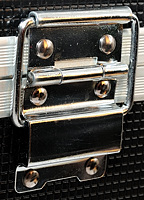
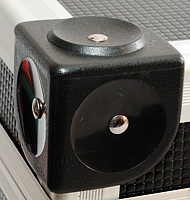
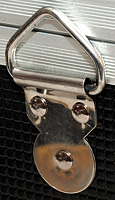

Here are some details from the case: lock, hinge, corner protection, eye for shoulder carry strap and the name sign.

The contents of the case are: The flashlight, main charger, car power cable, diffuser, shoulder carry strap and keys for the case.
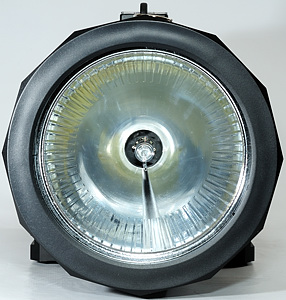
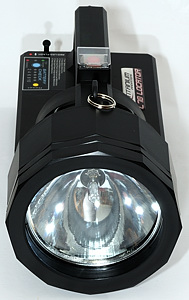
First a look from the front with the big reflector (About 10 cm in diameter), with the HID bulb in the center. The reflector has a light stripling. This stripling can be seen in the beam under some conditions.
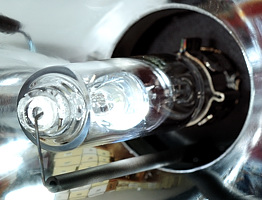
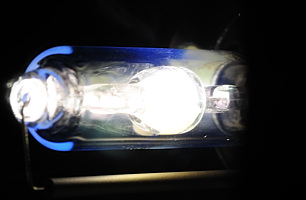
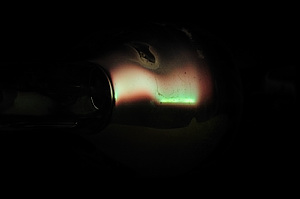

Here is a closer look at the bulb, first with it off, and then turned on. The last two pictures are of the arc, first picture is at low power, second picture is high power (A HID does not have any filament, the current is jumping from one electrode to the other).
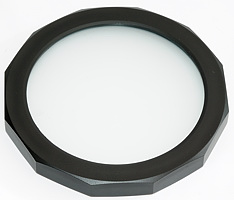
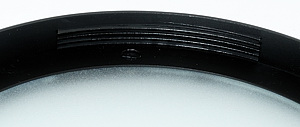
The light is supplied with a diffuser. Note that the thread on the diffuser is only partial.
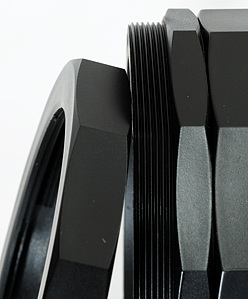
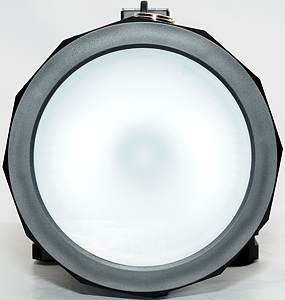
To mount the diffuser, the thread protection ring must first be removed, then the diffuser can be mounted. To avoid cross threading, it is necessary to be a careful when mounting it. These threads could have been better.
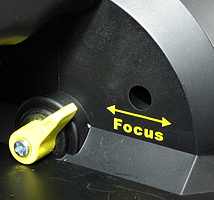
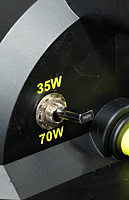
Moving around to the backside of the head, there is a focus lever. It will move the bulb in and out in the reflector, changing the focus. Some settings gives a black hole in the middle of the beam, but there are also some more useful tight and wide beam settings.
A 35W/70W switch is also present, this switch will change between low and high power. The difference between the two settings is visible, but not that big.
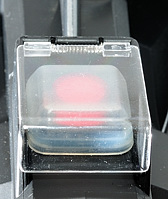

On top of the light is the on/off switch and it is protected under a spring loaded cover. This makes it more difficult to turn the light on or off, but HID are not supposed to be turned on or off all the time, i.e. I think it is a good solution. The on switch will glow red, when the light is on.
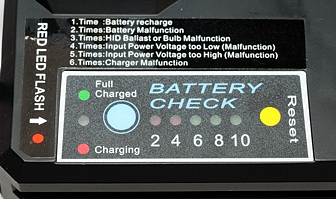
Furter back on the light is the battery meter. This meter contains not only the battery meter, but also a charge/fault lamp, a test switch and a reset switch. I believe that the fault check is a rather sensitive, first time I tried to charge the light I got a "Battery Malfunction" (Battery was 0° C), when the battery was charged and I disconnected the charger I got a "Charger Malfunction", both errors could be easily cleared with the reset switch.
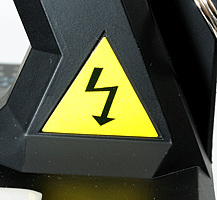
A HID light is using very high voltages to turn the bulb on, this light has a sticker with a warning symbol for high voltage. This high voltage is not anything to be concerned over in daily use, only if the cover breaks or if the front is open (i.e. open for replacing the bulb or if the glass breaks).
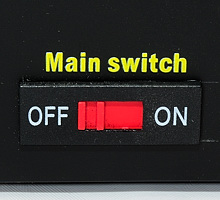
On the back of the light is another switch, the "Main switch", when off, neither the on/off switch or the control panel works.
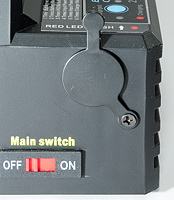
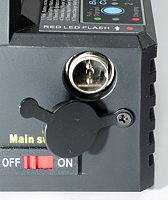
The back has a charging port with a cover. The charge connector must be screwed on.
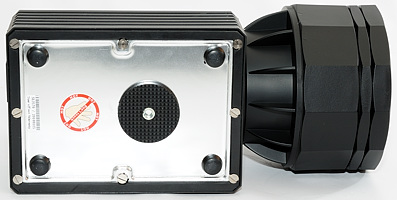
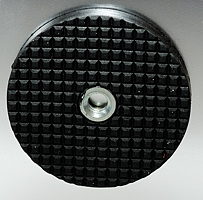
On the bottom of the light is a metal plate, with a warning saying it can get hot. It also has a hole for mounting on a camera tripod.
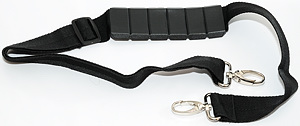
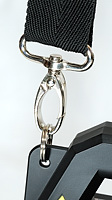
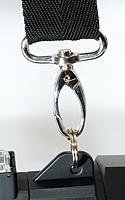
The light is supplied with a shoulder carry strap that can be mounted to a couple of split rings on the light. The carry strap can also be mounted to the transport case.
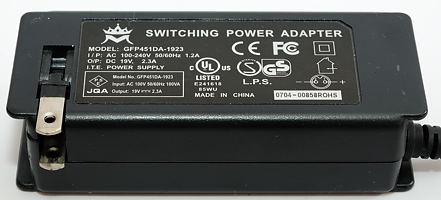
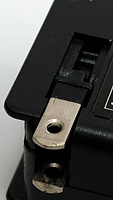
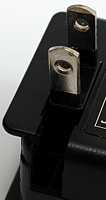
The light has a build in battery and need a charger for this. To make it compact the plug folds into the charger. The charger is universal voltage i.e. 100-240 VAC 50/60Hz and with the appropriate adapter can be used all over the world.
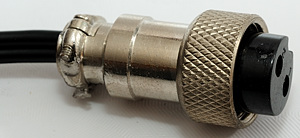
The connection to the flashlight has to match the connector on the light and has a nut to tie it down when charging the light, but it can also be used without tighten the nut.

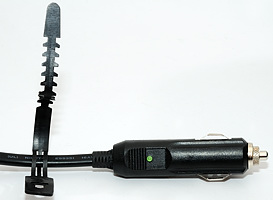
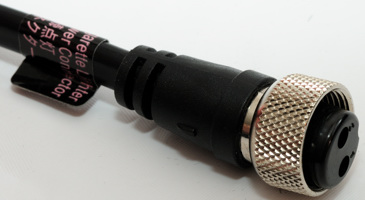
A car power cable is also included, this cable will power the light from a car, but not charge the light (Another cable is needed for that). I would have preferred that the same cable could be used for both tasks. On this cable the nut must be tighten for use, but the connector can move in and out a few mm, even with the nut fully tightened. I do not know if this will affect resistance in the connection.
I like this light, it can be very bright or have a good runtime and with the diffuser it makes a good bright work light. The two switches and the cover over the power switch is also a good idea (I have damaged one HID light because it turned on during transport). The only thing I do not like is the threads for mounting the diffuser they could have been much better.
Technical specification and measurements
The official specification for the light are:
- 7000 lumens at 70W for ~60 minutes
- 3500 lumens at 35W for ~115 minutes.
- Highly Adjustable/Focusable Output (Spot/Flood); Rotating reflector adjusts beam focus from 1 to 15 degree; narrow spot to wide flood.
- Effective Range is 8-1200 YARDS in spot mode (@35/70W respectively)
- Integrated, state of the art Li-Ion Battery pack; charge time ~3.5hrs
- Integrated 'Fuel Guage' Battery Meter indicates battery state of charge
- 3mm Tempered Glass Lense
- IP65 Dust/Water resistance rating
- AC 100-240V Wall Charger
- The L70 can be also be direct powered through the included 12/24VDC vehicle adapter for constant time unlimited operation
- Diffuser Filter for short range diffused scene lighting INCLUDED
- Foam lined Hard Case carry/storage case INCLUDED.
- Shoulder carry strap INCLUDED. Can be used on either the light OR the carry case.
- Uses a (replaceable) 4200K D2S bulb (High Intensity Discharge; Xenon metal halide)
Measured size and weight:
Length: 296 mm (Case depth: 294 mm)
Height: 150 mm, measured from standing surface to top of power switch. (Case: 205 mm)
Width: body: 133 mm, head: 139 mm (Case: 405 mm)
Reflector diameter: 105mm
Weight: 2650 gram for light (2740 with diffuser), 6140 gram for case with light, charger, etc.
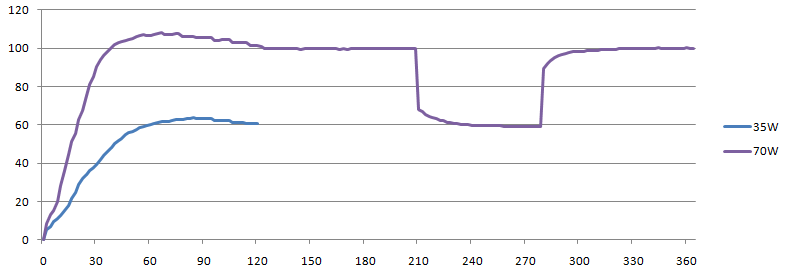
HID lights need some time to start up, this time is used to heat the gasses in the bulb. The topmost curve is 70W setting, where I switch to 35W and back to 70W again. The other curve is startup on 35W setting. It takes the lights nearly 60 seconds to reach full power on the 35W setting, the 70W setting does it in 36 seconds. Switching between 35W and 70W is much faster.
The timescale is in seconds.
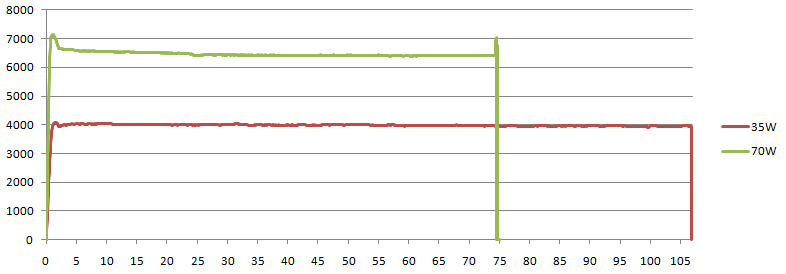
The runtime graph shows that the light has a well stabilised output for 75 minutes on high and 107 minutes on low.
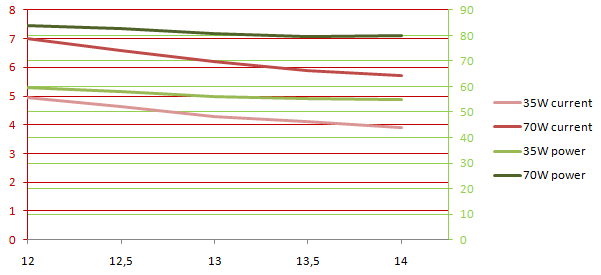
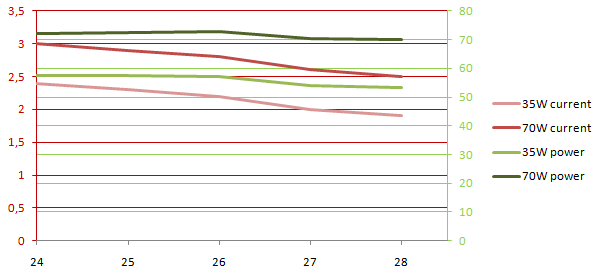
Using the car power adpater it is possible to measure how much power the light uses. The red curves and scales are current, the green curves and scales are power.
The current fall with increasing voltage and higher voltage also increases the efficiency of the ballast and lowers the power required. It also looks like the 70 watt is input power and the low setting is considerable higher than 35 watt, more like 53 watt. The light output does have a bigger difference.
Comparison to other Flashlights
For a comprehensive comparison see here: Beamshots from 17 lights
I will only show a very short comparison here:
Titanium L35, Titanium L70, Titanium L70 low
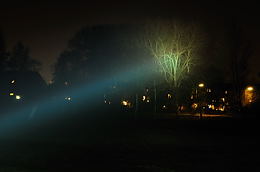
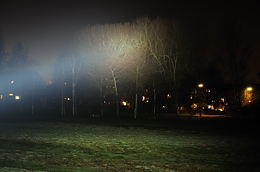
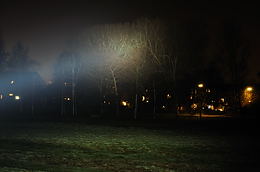
OMG DEFT, OLight SR90, Microfire Warrior III
